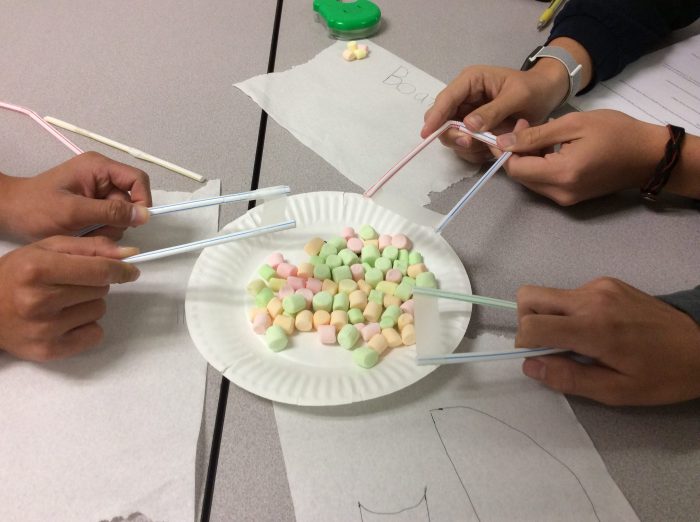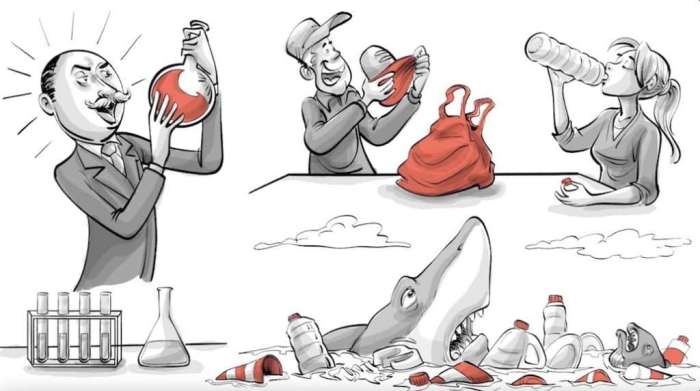Introducing the Tragedy of the Commons Lab, an intriguing exploration into the complexities of shared resources. This concept delves into real-world scenarios where individual actions can lead to collective depletion, offering valuable insights into resource management and sustainability.
Through game theory models, experimental evidence, and case studies, we uncover the dynamics that drive the tragedy of the commons. Join us as we delve into the implications for policymaking, the influence of social norms, and innovative technological solutions to mitigate this pervasive challenge.
Tragedy of the Commons Lab Introduction
The tragedy of the commons is a situation in which a shared resource is depleted because individuals act in their own self-interest, without considering the impact of their actions on the resource or others.
A classic example of the tragedy of the commons is the overgrazing of common land. Each herder has an incentive to graze as many animals as possible on the common land, as they benefit directly from the grazing. However, as more and more herders graze their animals on the common land, the land becomes overgrazed and the quality of the grazing decreases.
Eventually, the land may become so degraded that it is no longer able to support any grazing at all.
Real-World Examples
- Overfishing: When fish stocks are shared by multiple fishing fleets, each fleet has an incentive to catch as many fish as possible. However, this can lead to overfishing, which can deplete fish stocks and damage marine ecosystems.
- Deforestation: When forests are shared by multiple landowners, each landowner has an incentive to cut down as many trees as possible. However, this can lead to deforestation, which can contribute to climate change, soil erosion, and loss of biodiversity.
- Pollution: When air and water resources are shared by multiple polluters, each polluter has an incentive to emit as much pollution as possible. However, this can lead to pollution, which can harm human health and the environment.
Game Theory and the Tragedy of the Commons

Game theory offers a powerful framework for analyzing the tragedy of the commons, where individuals’ self-interested actions can lead to the depletion of a shared resource.
Consider a simple game theory model of the tragedy of the commons. There are n individuals, each of whom can choose to either cooperate (contribute to the shared resource) or defect (extract from the resource without contributing). The payoff to each individual depends on their own action and the actions of the other players.
Nash Equilibrium
The Nash equilibrium of this game is for all players to defect. This is because each individual can increase their own payoff by defecting, regardless of the actions of the other players. However, this leads to the depletion of the shared resource, which ultimately harms all players.
The tragedy of the commons highlights the importance of cooperation and collective action in managing shared resources. Game theory provides a useful tool for understanding the dynamics of these interactions and designing mechanisms to promote cooperation.
Experimental Evidence for the Tragedy of the Commons: Tragedy Of The Commons Lab

The theory of the tragedy of the commons is supported by a variety of experimental evidence. One of the most famous experiments is the “Tragedy of the Commons” experiment, conducted by Garrett Hardin in 1968.
In Hardin’s experiment, participants were given a common resource (a grazing pasture) and allowed to graze as many cows as they wanted. The experiment showed that, over time, the pasture was overgrazed and destroyed. This is because each participant acted in their own self-interest, grazing as many cows as possible, without considering the impact on the common resource.
Another Experimental Example
Another experiment that supports the theory of the tragedy of the commons was conducted by Elinor Ostrom in 1990. Ostrom’s experiment involved a group of farmers who were given a common resource (a forest). The farmers were allowed to harvest as much timber from the forest as they wanted.
However, the farmers were also given the responsibility of managing the forest. The experiment showed that, over time, the farmers developed a set of rules that allowed them to sustainably manage the forest.
Policy Implications of the Tragedy of the Commons
The tragedy of the commons highlights the challenges of managing shared resources, where individual actions can have detrimental effects on the collective. Understanding these implications is crucial for developing effective policies that promote sustainable resource management.
Policy Interventions
To address the tragedy of the commons, policymakers can implement various interventions, including:
- Property rights: Establishing clear property rights can define ownership and responsibilities, reducing incentives for overuse.
- Regulation: Government regulations can limit resource extraction or set standards for use, ensuring sustainable practices.
- Education and awareness: Educating individuals about the consequences of overuse can foster a sense of responsibility and encourage stewardship.
- Incentives and disincentives: Offering incentives for sustainable practices or penalizing overuse can encourage responsible behavior.
- International cooperation: In cases of shared resources across borders, international agreements can facilitate coordination and prevent overexploitation.
Social Norms and the Tragedy of the Commons

Social norms play a crucial role in mitigating the tragedy of the commons. They are informal rules and expectations that govern individual behavior within a group. These norms can encourage cooperation and discourage overexploitation of shared resources, thereby preventing the tragedy of the commons.
One example of how social norms have been used to address the tragedy of the commons is the management of common grazing lands. In many traditional societies, there are unwritten rules that govern how herders use these lands. These rules may limit the number of animals that each herder can graze, or they may specify the times of year when grazing is allowed.
By adhering to these norms, herders can avoid overgrazing and ensure the long-term sustainability of the common grazing land.
Examples of Social Norms
- Taboos: Certain actions or practices are considered unacceptable and are often enforced through social sanctions.
- Customs: Traditional practices that are passed down from generation to generation and are often associated with cultural identity.
- Folkways: Informal rules that guide everyday behavior and are often based on common sense or practicality.
- Mores: Strongly held moral principles that are considered essential for the well-being of society.
Social norms can be effective in mitigating the tragedy of the commons because they provide individuals with incentives to cooperate. Individuals who follow the norms are rewarded with social approval and acceptance, while those who violate the norms are punished with social disapproval and exclusion.
Technological Solutions to the Tragedy of the Commons

Technology offers various means to address the tragedy of the commons. These solutions aim to enhance resource monitoring, facilitate coordination, and enforce sustainable practices.
Monitoring and Data Collection
Advanced technologies like remote sensing, drones, and IoT devices enable real-time monitoring of resource use. This data can be used to track consumption patterns, identify areas of overexploitation, and inform decision-making.
Communication and Coordination
Online platforms and mobile applications facilitate communication among resource users, enabling them to share information, coordinate activities, and develop collective management strategies.
Enforcement and Regulation
Blockchain technology and smart contracts can create transparent and tamper-proof systems for tracking resource use and enforcing regulations. This can deter unauthorized access and promote accountability.
Tragedy of the commons lab experiments demonstrate how individual self-interest can lead to collective harm. Like the Montagues and Capulets in thesis on romeo and juliet , each party pursued their own goals without considering the consequences for the shared resource.
In the lab, this led to the depletion of the resource, while in the play, it resulted in the tragic deaths of Romeo and Juliet.
Table: Comparison of Technological Solutions to the Tragedy of the Commons
| Technology | Benefits | Limitations ||—|—|—|| Remote sensing | Real-time monitoring of large areas | Expensive, requires specialized expertise || Drones | Aerial surveillance, data collection | Limited range, weather-dependent || IoT devices | Continuous data collection, automated monitoring | Requires extensive infrastructure || Online platforms | Facilitates communication, coordination | Requires internet access, may exclude marginalized users || Blockchain | Transparency, tamper-proof record-keeping | Complex to implement, high computational costs |
Case Studies of the Tragedy of the Commons
The tragedy of the commons manifests in various contexts, leading to resource depletion and environmental degradation. Here are a few notable case studies:
Overfishing, Tragedy of the commons lab
- North Atlantic Cod Fishery:Unregulated fishing practices led to a drastic decline in cod stocks, causing a collapse of the fishery in the 1990s.
- Mediterranean Bluefin Tuna:Overfishing has severely depleted tuna populations, threatening the species with extinction.
Deforestation
- Amazon Rainforest:Commercial logging, cattle ranching, and agricultural expansion have contributed to the destruction of vast areas of the rainforest.
- Indonesia’s Tropical Forests:Deforestation for palm oil plantations has led to habitat loss and biodiversity decline.
Air Pollution
- Los Angeles Smog:Automobile emissions and industrial pollution create a dense haze that affects air quality and human health.
- Beijing Air Pollution:Rapid industrialization and coal burning have resulted in severe air pollution, posing significant health risks.
Water Scarcity
- Colorado River Basin:Overuse of water for agriculture and urban development has strained water resources, leading to conflicts among states.
- Cape Town Water Crisis:Prolonged drought and mismanagement of water resources resulted in a near-collapse of the city’s water supply in 2018.
Educational Resources on the Tragedy of the Commons
Understanding the tragedy of the commons is crucial for students to grasp the complexities of resource management and decision-making. This section provides a comprehensive list of educational resources and a sample lesson plan to enhance their learning experience.
Online Resources
- The Tragedy of the Commons: Khan Academy
- The Tragedy of the Commons: Encyclopedia Britannica
- The Tragedy of the Commons: Investopedia
- The Tragedy of the Commons: National Geographic
Lesson Plan: The Tragedy of the Commons
This lesson plan provides a structured approach to teaching students about the tragedy of the commons.
Objectives:
- Students will define the tragedy of the commons.
- Students will identify examples of the tragedy of the commons in the real world.
- Students will analyze the causes and consequences of the tragedy of the commons.
- Students will propose solutions to the tragedy of the commons.
Materials:
- Whiteboard or chart paper
- Markers
- Handouts on the tragedy of the commons
Procedure:
- Begin by asking students if they have ever heard of the term “tragedy of the commons.” If so, ask them to share what they know about it.
- Next, define the tragedy of the commons as a situation in which individuals acting in their own self-interest deplete a shared resource, even though it is in their collective best interest to conserve it.
- Provide students with examples of the tragedy of the commons, such as overfishing, deforestation, and pollution.
- Ask students to analyze the causes and consequences of the tragedy of the commons.
- Finally, ask students to propose solutions to the tragedy of the commons.
Assessment:
Students will be assessed on their ability to:
- Define the tragedy of the commons.
- Identify examples of the tragedy of the commons in the real world.
- Analyze the causes and consequences of the tragedy of the commons.
- Propose solutions to the tragedy of the commons.
Key Questions Answered
What is the tragedy of the commons?
It is a situation where individuals acting in their own self-interest deplete a shared resource, leading to a negative outcome for all.
How can game theory help analyze the tragedy of the commons?
Game theory models can simulate the interactions between individuals and predict the outcomes based on their strategies and incentives.
What are some examples of the tragedy of the commons?
Overfishing, deforestation, and air pollution are all examples of the tragedy of the commons.